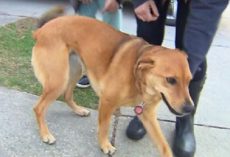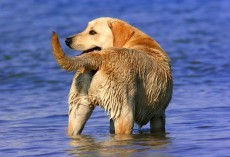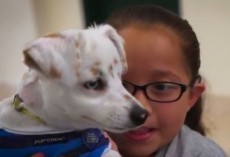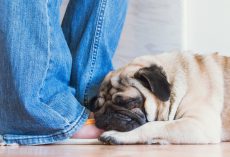Below you'll find a list of inappropriate things your pooch may be doing. Whether she's a barker, chewer, or suffers from anxiety, there's always a reason. Figure out why she's feeling insecure or upset and try to overcome that problem while you train her the correct behaviors. Also, make her feel loved throughout the process. The more positive reinforcement you provide her, the more likely she'll get the new habits down and get rid of the “bad” behaviors listed below from About Home.
1. Barking
These are the most common types of barking:
•Warning or Alert
•Playfulness/Excitement
•Attention-seeking
•Anxiety
•Boredom
•Responding to Other Dogs2. Chewing
The most common reasons dogs chew are as follows:
•Puppy Teething
•Boredom / Excess Energy
•Anxiety
•Curiosity (especially puppies)3. Digging
In general, most dogs dig for these reasons:
•Boredom or Excess Energy
•Anxiety or Fear
•Hunting Instinct
•Comfort-Seeking (such as nesting or cooling off)
•Hiding Possessions (like bones or toys)
•To Escape or Gain Access4. Separation Anxiety
Signs of true separation anxiety include:
•Dog becomes anxious when owner prepares to leave
•Misbehavior occurs in the first 15-45 minutes after owner leaves
•Dog wants to follow owner around constantly
•Dog tries to be touching owner whenever possible5. Inappropriate Elimination
If no medical cause is found, try to determine the reason for the behavior, which can come down to one of the following:
•Submissive/Excitement Urination
•Territorial Marking
•Anxiety
•Attention-seeking
•Lack of proper housebreaking6. Begging
Yes, it is hard to resist that longing look, but giving in “just this once” creates a problem in the long run. In a pack setting, a subordinate would never beg from alpha dogs without reprimand. When you teach your dog that begging is permitted, you jeopardize your role as pack leader. Before you sit down to eat, tell your dog to stay, preferably where he will not be able to stare at you. If necessary, confine him to another room. If he behaves, give him a special treat only after you and your family are completely finished eating.
7. Chasing
While you may not be able to stop your dog from trying to chase, you can take steps to prevent disaster.
•Keep your dog on a leash at all times (unless directly supervised indoors).
•Train your dog to come when called.
•Have a dog whistle or noisemaker on hand to get your dog’s attention.
•Stay aware and watch for potential triggers, like joggers.8. Jumping Up
Jumping up is often attention-seeking behavior, so any acknowledgment of your dog’s actions provide a reward! The best method: simply turn away and ignore your dog. Do not make eye contact, speak, or touch your dog. Go about your business. When he relaxes and remains still, calmly reward him. It won’t take long before your dog gets the message.
9. Biting
Beyond puppy behavior, the motivation to bite or snap typically comes from the following:
•Fear or Defensiveness
•Protection of Property
•Pain or Sickness
•Dominance Assertion
•Predatory Instinct10. Aggression
Reasons for aggression are basically the same as the reasons a dog will bite or snap, but overall canine aggression is a much more serious problem. If your dog has aggressive tendencies, consult your vet first – it may stem from a health problem. Then, seek the help of an experienced dog trainer. Serious measures should be taken to keep others safe from aggressive dogs!










